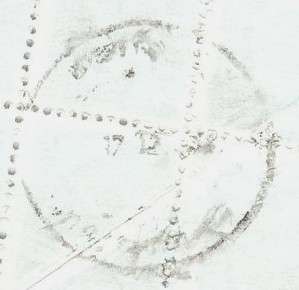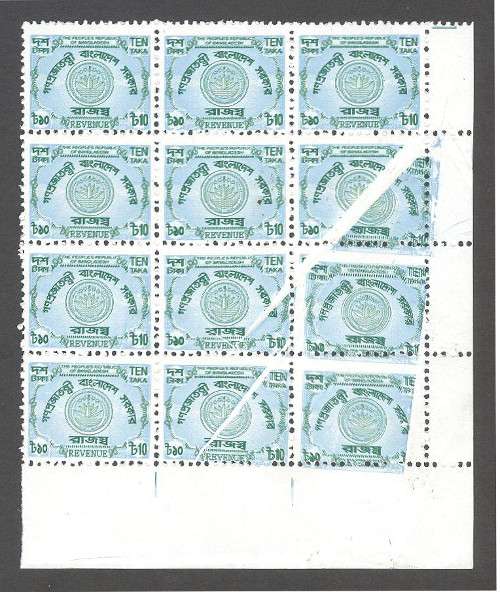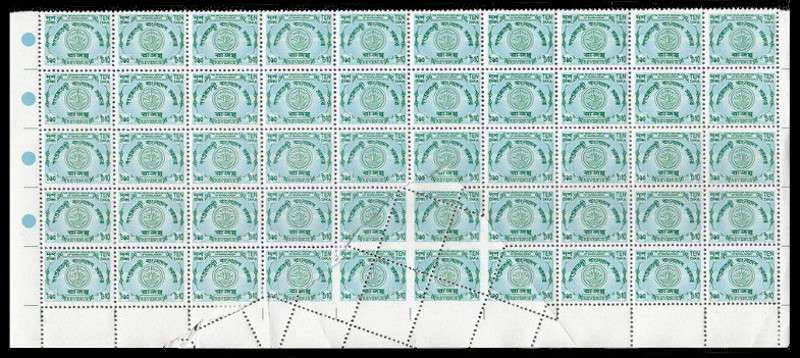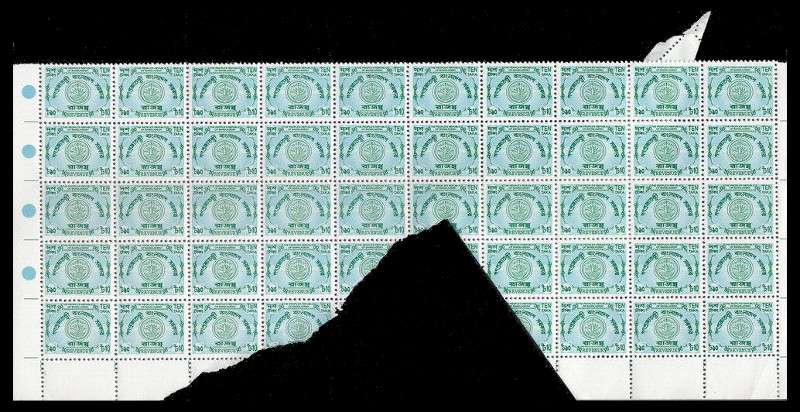Dates of Usage: 1973 - Present (?)
Used to collect fees for certain bills, such as hotel, clothing stores, some bank transactions, etc.
1973
Map of Bangladesh.
Printer: Nasik Security, India
Perf.:
Quantity printed: 50,000,000
Earliest and latest dates of documented usage:
7 June 1975.

DENOMINATIONS
*15p. – red.
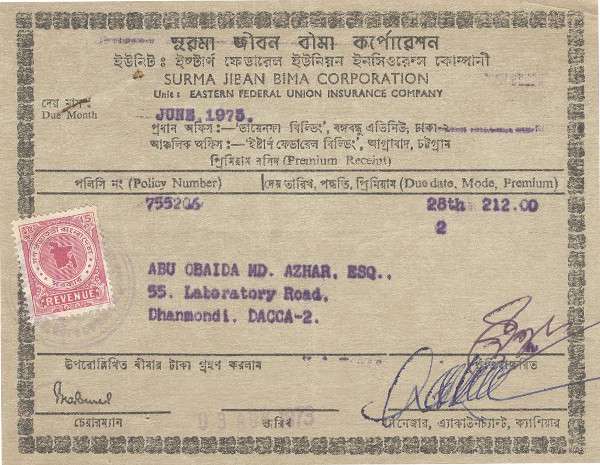
1974
Numeral design in plaque.
Printer: Nasik Security, India
Perf.:
Earliest and latest dates of documented usage:
16 June 1974.
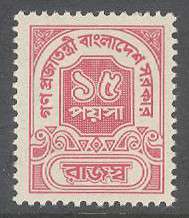
DENOMINATIONS
*15p. – red.
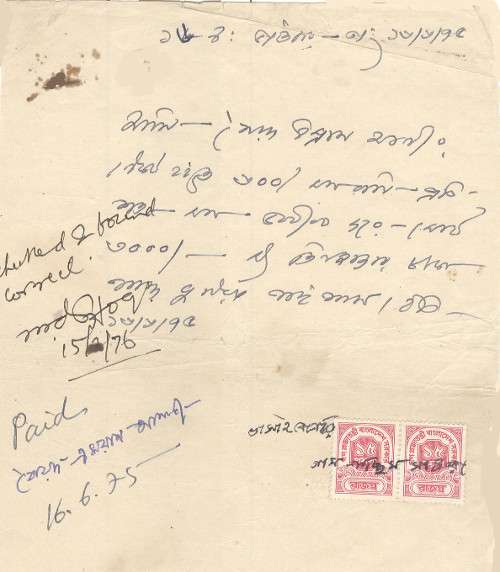
1977
Same design as above but value changed.
Printer: Nasik Security, India
Sheet size: 160 (10 x 16)
CCM: Yes
Plate #: No
Perf.:
Earliest and latest dates of documented usage:
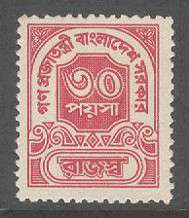
DENOMINATIONS
*30p. – red
*a. double printing
*b. miscut and printed on gum side.
1977 REVENUE STAMP VARIETIES
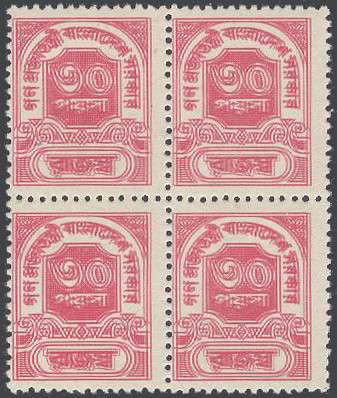
The stamp is doubly printed, with the second impression shifted slightly to the left.

The second stamp of this strip of four has a paperfold (folded open in this image) making it look like a misperf.

Two pre-printing folds or creases in the paper.

A large paper fold in the paper affecting the third stamps from the left.

This partial stip from the bottom of a sheet of stamps is printed on the gum side.
1978
Numeral design in oval.
Printer: Harrison and Sons, England
Perf.:
CCM: Yes
Plate #: No
Earliest and latest dates of documented usage:
31 October 1980.
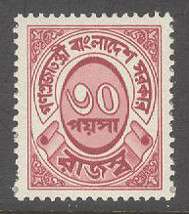
DENOMINATIONS
*30p. – red.

1980
Provisional surcharge on Harrison 1978 30p stamp.
Printer: Tongi Postal Printing Press, Bangladesh
Perf.:
CCM: Yes
Plate #: No
Earliest and latest dates of documented usage:
31 October 1980.

DENOMINATIONS
*20p. on 30p – red
*a. surcharge and obliteration shifted upwards, does not cover original value.
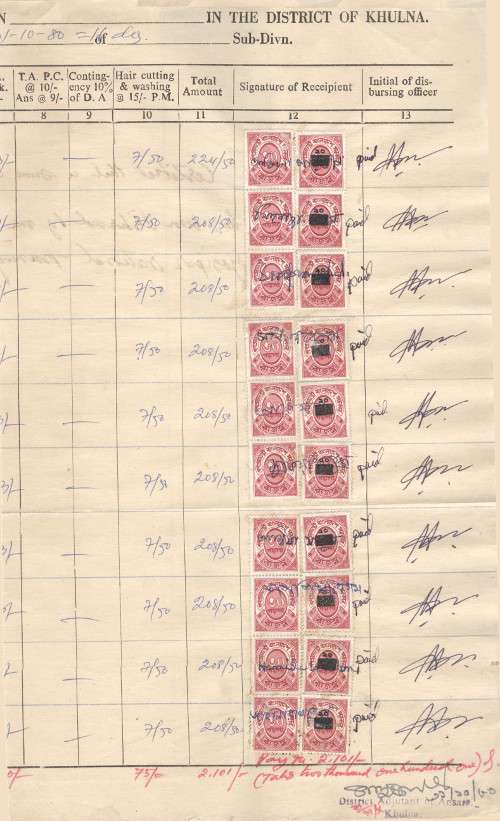
1980 REVENUE STAMP VARIETIES

1981
Numerical design in oval.
Printer: Harrison and Sons, England
Perf.:
Earliest and latest dates of documented usage:

DENOMINATIONS
*50p. – red
*a. imperf pair
*b vertical pair, top stamp imperf.
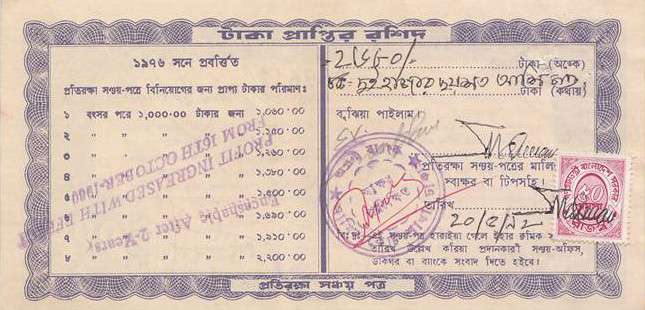
REVENUE STAMP VARIETIES
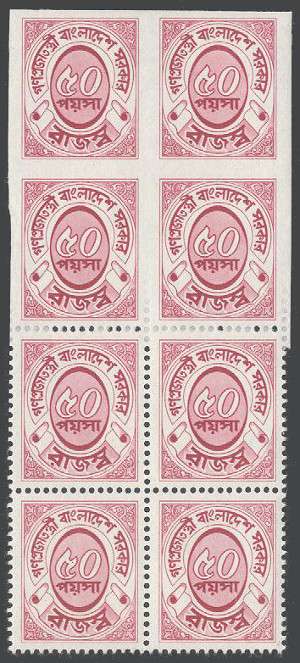
1983
New “eye-shaped” design.
Printer: Mezdonarodh Niya Kniga, USSR
Perf.:
Earliest and latest dates of documented usage:
24 July 1984.
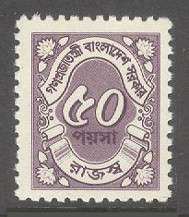
DENOMINATIONS
*50p. – purple and pink
*a. missing pink.
REVENUE STAMP VARIETIES

1987
Scroll above value design.
Printer: Mezdonarodh Niya Kniga, USSR
Perf.:
Earliest and latest dates of documented usage:

DENOMINATIONS
*50p. – purple.
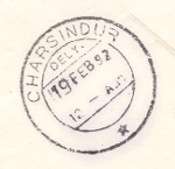
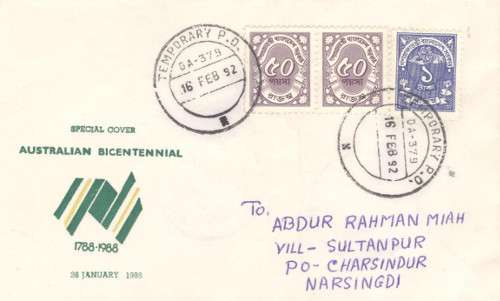
1990
Image of a tiger above denomination.
Printer: Mezdonarodh Niya Kniga, USSR
Perf.:
Earliest and latest dates of documented usage:
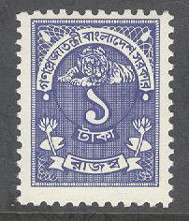
DENOMINATIONS
*Tk.1 – violet-blue.

REVENUE STAMP VARIETIES

1991
Shapla (water lily). TheTk.4 stamp was reprinted in 1993 in a slightly different shade of blue.
Printer: Bangladesh Security Printing Press, Bangladesh
Perf.:
Earliest and latest dates of documented usage:
20 April 1993.
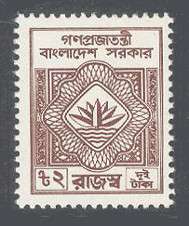
DENOMINATIONS
*Tk.2 – brown
*a. various misperforation varieties
*Tk.4 – blue
*a. various misperforation varieties.
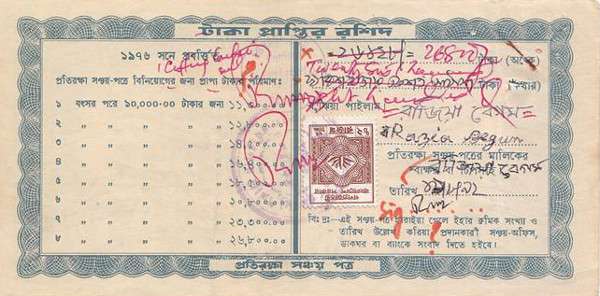
REVENUE STAMP VARIETIES
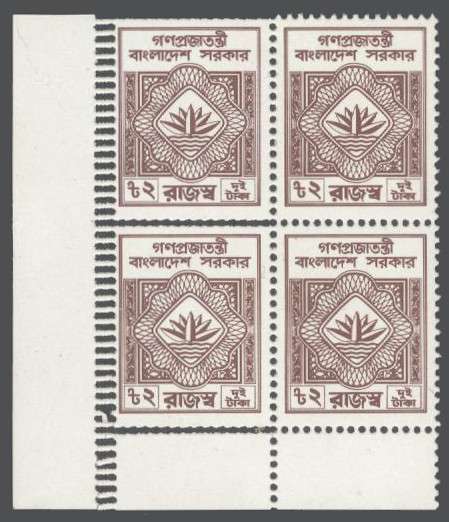

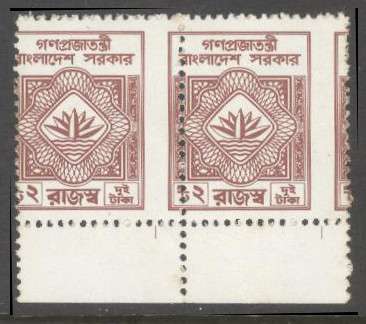
1993
Reprint of the Tk.4 denomination in a slightly different shade of blue.
Printer: Bangladesh Security Printing Press, Bangladesh
Perf.:
Earliest and latest dates of documented usage:
19 June 1994.
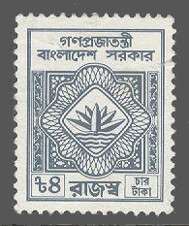
DENOMINATIONS
*Tk.4 – blue.
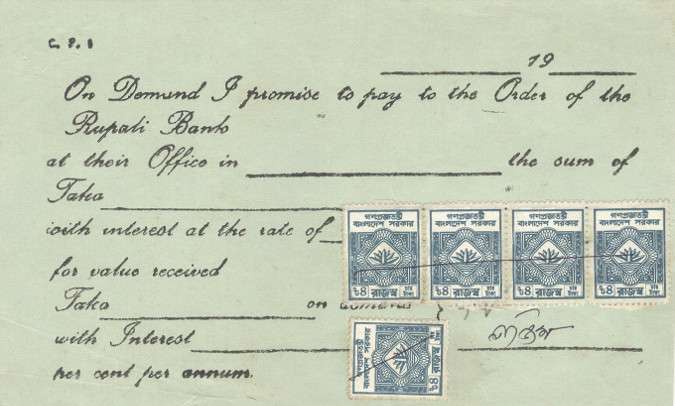
1991 BLUE SHAPLA VARIETIES
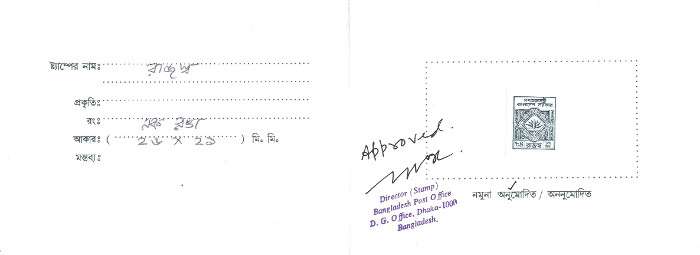
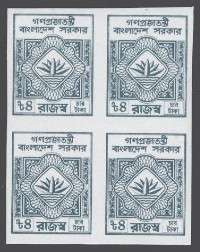
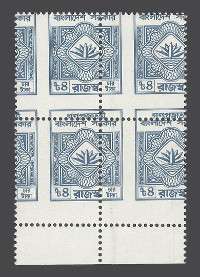

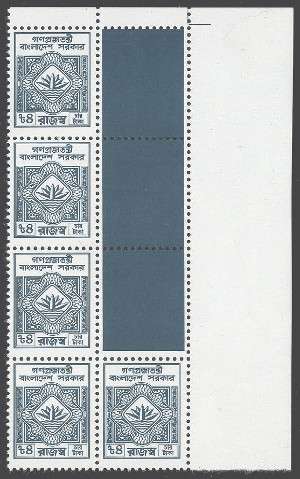
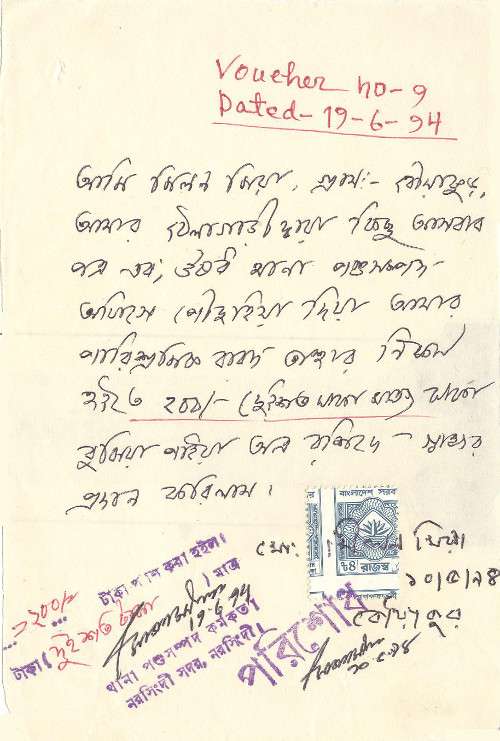
YEAR (?)
Shapla (water lily) in center circle with a panel on each side.
Printer: Security Printing Press, Bangladesh
Printed in Sheets of 200 (10 x 20)
Examples known printed on thick paper and shiny gum (Printer’s waste ?).
Perf.:
Earliest and latest dates of documented usage:
4 April 2006.
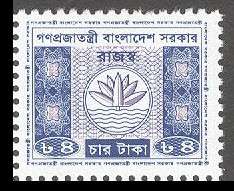
DENOMINATIONS
*Tk.4 – blue and purple
*a. purple center only
*b. double printing of blue
*c. imperforate
*d. various misperforations
*e. various paper folds and creases.
1991 BLUE & PURPLE SHAPLA VARIETIES

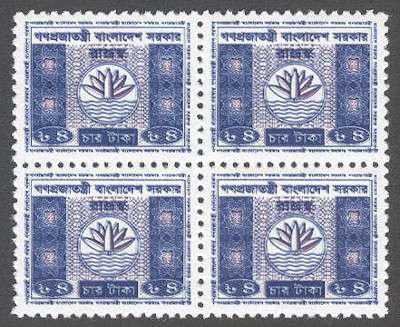
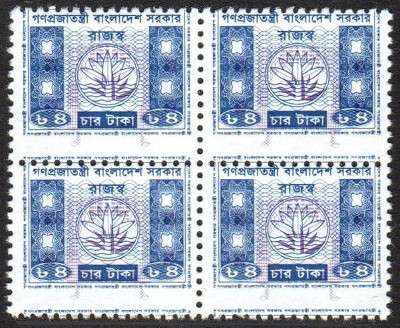
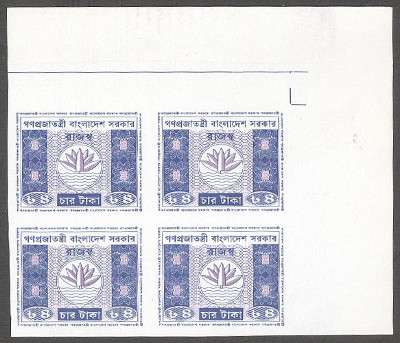
Imperforate block of printer’s waste with no gum on the back.

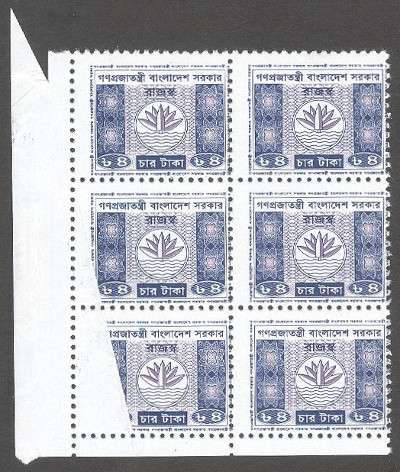




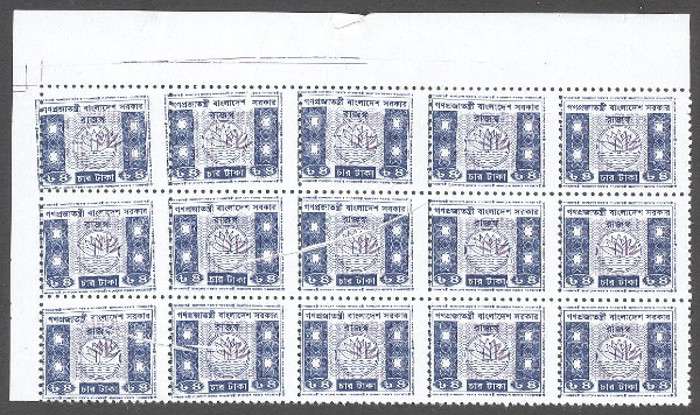
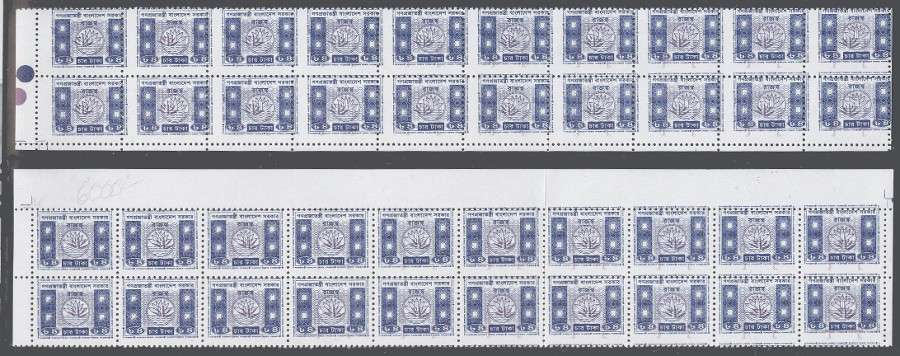
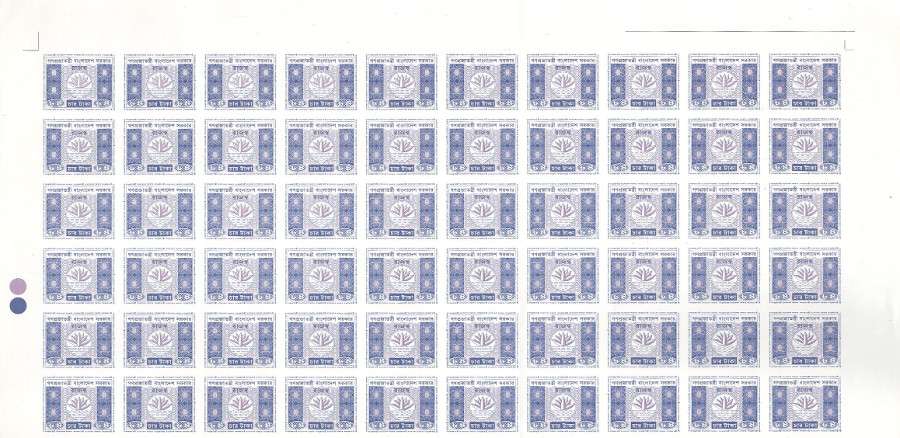
YEAR (?)
Shapla (water lily) in center circle with a panel on each side. This value was created to make up the change in rates to Tk.5. With quantities of the Tk.4 stamp plentiful, it was more economical to print this stamp to add to the Tk.4 stamp. The next issue was the Tk.5 stamp, illustrated below.
CCM: yes
Printer: Security Printing Press, Bangladesh
Sheet size: 200 (10 x 20)
CCM: Yes
Plate #: No
Margin inscription: None
Perf.:
Earliest and latest dates of documented usage:

DENOMINATIONS
*Tk.1 – green and pink
a. imperforate.
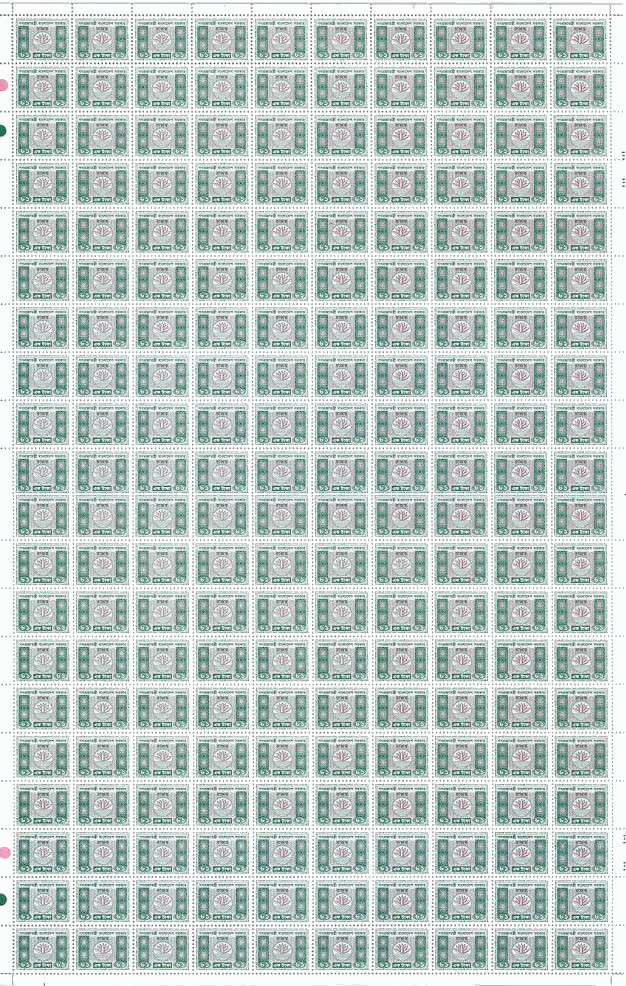
2008
Shapla (water lily) in the center below arch of black text.
CCMs: Yes. Printer’s waste seen with no CCMs or just pink.
Printer: Security Printing Press, Bangladesh
Printed in Sheets of 200 (10 x 20)
Perf.:
Earliest and latest dates of documented usage:

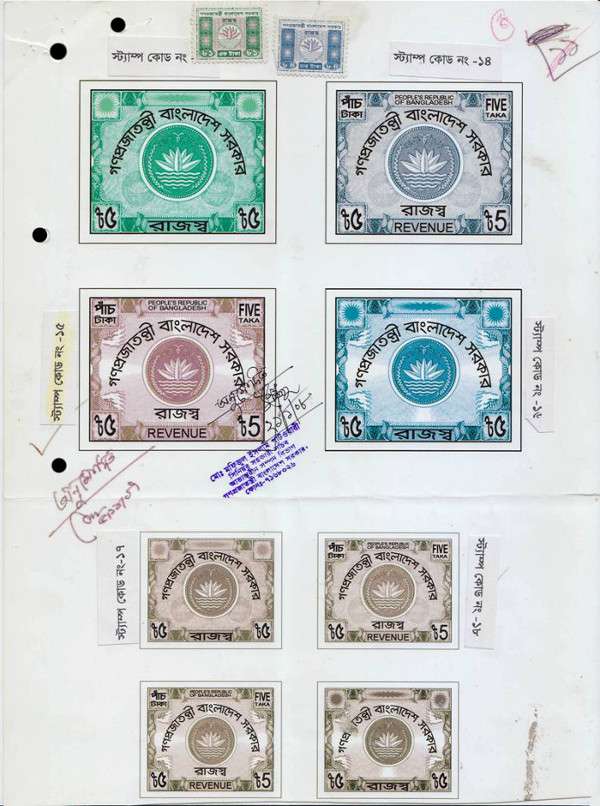
DENOMINATIONS
*Tk.5 – pink and black
*a. imperforate of black frame only
*b. imperforate
*c. various misperforations.
PINK REVENUE VARIETIES
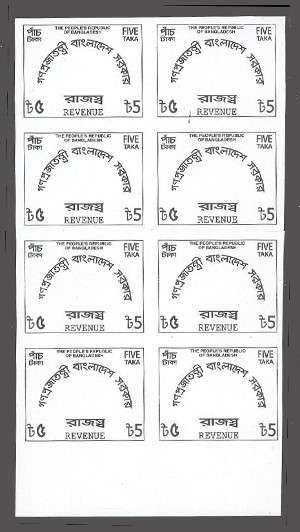
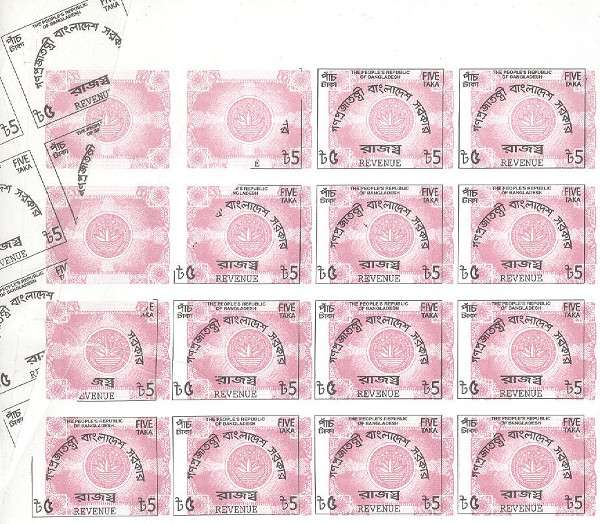
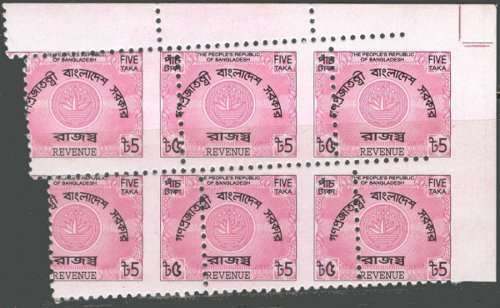
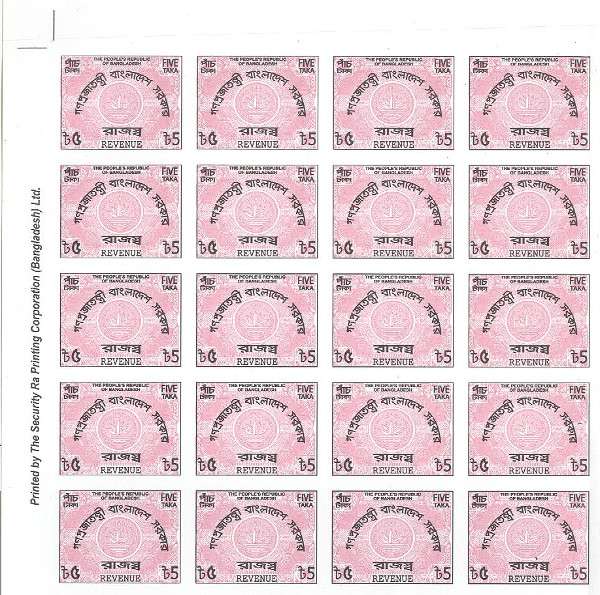

This imperforate sheet of printer’s waste has a slight shift of the black to the right of the pink image that progressively gets smaller as one goes down the sheet, until it is normal. There is no CCM on the sheet.
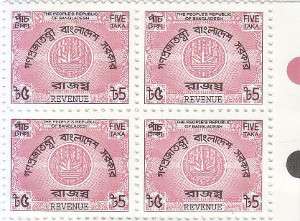
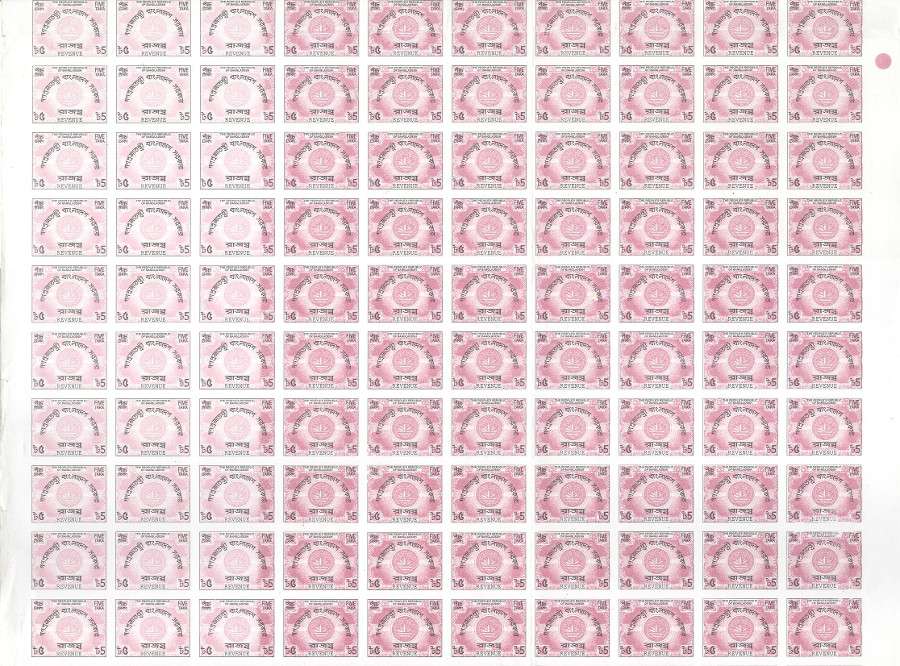

YEAR (?)
Shapla (water lily) in a circle under an arch of green text.
CCM: (?)
Printer: Security Printing Press, Bangladesh
Printed in Sheets of 200 (10 x 20)
Perf.:
Earliest and latest dates of documented usage:
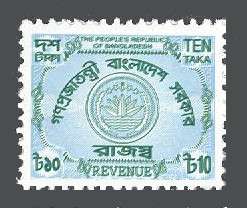
DENOMINATIONS
*Tk.10 – green and blue.
GREEN REVENUE VARIETIES
